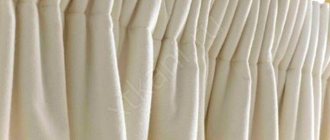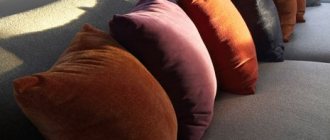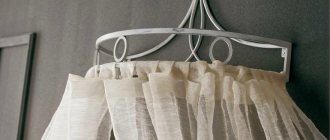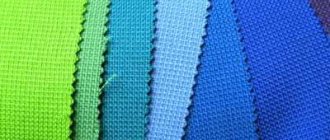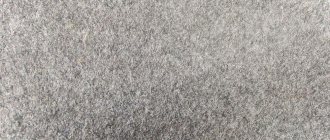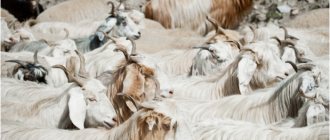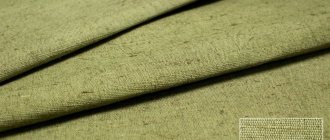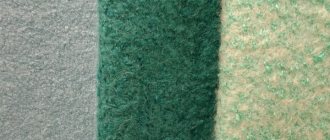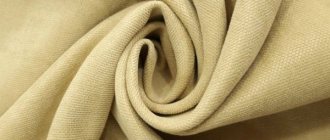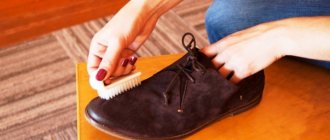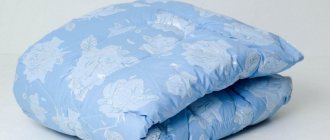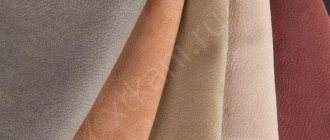14.12.2018
When choosing a carpet, buyers pay attention to both the appearance of the product and the materials used in the production process. Usually, with the compositions from which the pile is made, everything is more or less clear. These are wool, silk, cotton, viscose. But not everyone knows what the basis of a carpet is and what raw materials are used in its production.
Quite often you can find a base made of jute in carpets - what kind of material it is, what features it has and what you should pay attention to during operation will be discussed in the article.
What is a jute carpet backing?
Jute is a natural material of plant origin. It is distinguished by excellent performance characteristics and environmental friendliness.
Jute fiber is obtained from a plant of the same name. It grows in tropical countries, is extremely unpretentious, and is grown without the use of pesticides and chemical fertilizers. The plant is an annual plant, belongs to the linden family, and reaches a height of 3 meters per season.
The main advantages of the material are low cost and excellent strength. The jute base never deforms and will last for many years. The strength of the material is due to the content of a substance such as lignin in the plant. It is a high molecular weight polymer of plant origin that gives jute the characteristics of wood.
Separately, it is worth mentioning the interaction of jute with moisture. The jute base of the carpet is capable of absorbing water like a sponge, preventing it from harming the pile of the covering. In the future, the material will gradually dry out, maintaining its original shape. At 88% air humidity, jute fiber can contain up to 23% moisture and still remain dry to the touch.
Due to the widespread use of jute and the availability of raw materials, it is actively used not only in the production of floor coverings. In addition, transportation bags, ropes and cords are made from it.
Crochet rugs
Now we'll move on to a much more interesting way to create a rug - crocheting it. Many needlewomen find this process soothing, and the thick thread makes it very simple. However, keep in mind that small debris will definitely fall off the twine. Knit or lay something on the floor to make it easier to clean up later.
Openwork
Openwork rugs can be knitted using napkin patterns, one of which we will present below. Let's figure out how to make such a cute oval rug.
It will require a lot of twine and a large hook from number six at least. First, cast on the required number of air loops, which will be in the center of the rug. Then knit according to the pattern.
In fact, you can choose almost any pattern of openwork napkins. Just make sure there are not too many holes, otherwise the rug will not be dense.
Oval
This oval rug is easy to knit and looks very cute. It will be a great decoration for a living room or even a children's room.
To begin, cast on a chain of chain stitches of the required length. How to determine it? Just subtract its width from the length of the future carpet. But keep in mind that when knitting it will still stretch a little.
Knit in the round or spiral according to the pattern shown above. Don't forget to alternate columns.
Round with popcorn pattern
An interesting and rather unusual version of a round rug. It’s not at all difficult to make, just follow the diagram.
Square
Sometimes only a square or rectangular rug fits into the interior. It's easy to knit.
In order to get such a cute carpet, you need to put a chain of air loops of suitable length on a hook. In the first row, knit all the loops with double crochets and turn the product over. In the second, single crochet into the front wall of the loop and turn over again. In the third row there are regular single crochets, and the fourth duplicates the second. In the fifth - double crochets behind the back wall. Starting with the sixth row, repeat the pattern from the second to the fifth rows until you get the desired length of the finished rug.
Color
If you don't want to decorate your room with a single-color rug, you can add some color. Surely the first option that comes to mind is to paint the twine. Of course, they do this too, but for this you will have to rewind the jute into skeins, dye it, dry it, collect it into balls again... It is much easier to take yarn of the color you like. By the way, you can also use old T-shirts instead of yarn. In the master class they knit with them.
Start by making a small loop of yarn, but do not pull it too tight.
Take twine and a hook, preferably number six, and begin tying the loop with single crochets. The knitting should be very tight.
In the second row, make a pair from each column. In further rows, randomly add two columns.
After each knitted circle, place the mat on the floor. We need to see how well it fits. Are all the loops tight enough or should they be made looser?
When you get the right size, cut the thread and be sure to hem it from the inside out.
As you can see for yourself, you can even crochet a rug from twine. Moreover, the description of these master classes is simple; even a novice needlewoman can handle it. More experienced ones can come up with schemes and patterns on their own.
Features of jute carpets
As a base, jute can be used for floor coverings made of silk, wool, as well as various synthetic materials - viscose, polypropylene, acrylic. At the same time, artificial carpets with a jute base are now found as often as woolen ones. Confirmation that jute was used for the base of the carpet is a special JU marking.
There are also products on the market made entirely of jute thread. They are valued for their naturalness, environmental friendliness and originality. Pleasant texture and natural colors allow you to harmoniously integrate the coating into almost any interior style. Some consider jute rugs to be too stiff, while others see this as an advantage.
In eastern countries such as Thailand and India, jute rugs are used as wall decorations. They sometimes look like works of art and may contain abstract drawings, landscapes and even portraits.
Knitted rug for the front door
The product near the front door is constantly exposed to external influences. It collects dust and dirt from the street, and in winter there may be leftover snow from shoes on it. This is precisely the main quality of a carpet: it must be made of durable, dense material. Otherwise, you will not have time to exchange the item for a new one.
Knitted rug
To make a rug yourself, you will need the following raw materials:
- garbage (or regular) bag strips that can be easily washed with water to remove dirt;
- polyester cord;
- jute rope;
- twine or rope.
This product is knitted using a special technology, which can be found on the Internet.
Knitted rug
You can also make a rug from strips of old clothes. But then you need to have a large supply of old clothes and a love of knitting, since the fabric product quickly becomes unusable. Openwork rugs are definitely not suitable for the hallway.
Knitted rug
Colored runner is ideal for long corridors
Advantages and disadvantages of jute carpets
Any material, even the most universal, has both advantages and disadvantages. If we talk about jute, then there will be much more of the former, and it doesn’t matter whether we are talking about the jute base of a woolen or synthetic carpet or a product made entirely of these natural fibers.
The advantages of a jute base are strength, durability and hygroscopicity, which helps protect the pile from excess moisture in the room.
The advantages of all-jute carpets include:
- Originality - such products are not often found in homes, they look stylish and attract attention;
- A large selection of models and shapes - you can choose a carpet for any interior after looking at the photos and options for use;
- Hypoallergenic;
- Resistance to mechanical stress;
- Possibility of use in rooms with high humidity levels;
- Relatively low cost, especially for industrially manufactured products (handmade is noticeably more expensive);
- Possibility of use for massage purposes - the rigidity of the coating will allow you to effectively massage your feet, and the mat can also be used during yoga practices;
- Versatility - can be used in the living room, bedroom, kitchen, hallway and even in the bathroom;
- Practicality - the carpet holds its shape well, does not slip on the floor, and does not wrinkle underfoot.
Jute has practically no disadvantages. The only thing we can call is the rigidity of the material. Therefore, it is rarely used as 100% of the carpet composition and is more often used to create a base in combination with pile of wool or other materials. This has a positive effect on the cost and characteristics of the product. Even an inexpensive synthetic carpet, the base of which is made of jute, will be much more attractive in terms of characteristics than a similar product made 100% of artificial materials.
- Quick view d058 – CREAM
from 713 show dimensions hide dimensions - Quick view d391 – BEIGE
from 1296 show dimensions hide dimensions - Quick view d066 – GREEN – Oval
from 1296 show dimensions hide dimensions - Quick view Sunrise 2 D549 – GRAY-BLUE
out of stock
How to attach?
Carpet based on natural jute cannot be laid on untreated wood or concrete. Synthetic, fits on any floor. Before fastening, the carpet must rest for 24 hours.
It is cut to the size of the room, leaving allowances of 5-10 cm for the baseboards. The floor must be leveled. For fastening, use the following methods:
- without gluing, simply fixed under the baseboards;
- on tape;
- on glue;
- fixed on substrates and slats.
Caring for a jute carpet
There are no special features in caring for carpets with a jute backing. Although the material is natural, it is unpretentious, easy to clean, and is not afraid of moisture.
When caring for such carpets, you should follow the manufacturer’s recommendations and also the rules for caring for piles made of a particular material. It would be a good idea to vacuum the jute base itself once every few months. It is also worth making sure that the floor under the carpet remains clean and that dust, sand and other contaminants do not accumulate there.
If we are talking about a carpet made of 100% jute, but the main cleaning will also consist of regular use of a vacuum cleaner. Do not allow dust and other contaminants to accumulate on the carpet. This is unhygienic and contributes to the wear of the coating.
If a stain has formed on the surface, you need to get rid of it as quickly as possible before the fabric absorbs the dirt. To do this, use a soft sponge and detergent to care for jute carpets. You shouldn’t be afraid to get the carpet wet, but you shouldn’t over-wet the surface. You can either simply dry the area to be cleaned at room temperature, or you can try drying it with a hairdryer, but in a gentle mode.
If necessary, a small jute product can be washed, but reviews from those who have already tried this say that the carpet will become heavy after contact with water, it will be extremely difficult to handle it alone, and then it will take several days for the coating to dry .
To the begining
Cons of carpet
Formation of fungus and mold. Increased hydrosensitivity. The tendency to accumulate moisture promotes the formation of fungi, which are practically impossible to remove. In this case, the floor covering will have to be changed completely.
mold on the carpetDifficulty and frequency of cleaning. The tendency to accumulate dust requires cleaning every three days. An ordinary broom will not be able to clean the carpet surface well. A powerful vacuum cleaner is required for cleaning. However, over time, dust gets clogged deep into the pores of the layers, from where even a vacuum cleaner cannot remove such accumulations.
can only be effectively cleaned with a vacuum cleaner
Difficulty removing stains. Since the surface of the carpet absorbs liquid very well, any contaminants from drinks or wet substances are absorbed deep into the base of the material. It is very difficult and often almost impossible to remove such contaminants. And it is not possible to wash the coating, since it is often glued to the floor.
Absorbs odors. Fabric, natural carpet with thick pile absorbs third-party odors very well, which also cannot always be eliminated.
Fragility. The average lifespan of carpet varies from 5 to 7 years. After which, the material begins to lose its attractiveness, defects and other damage appear.
High cost of quality material. A truly durable and wear-resistant carpet will cost much more than linoleum or porcelain tiles for the floor.
Carpet is not the most practical floor covering in terms of use and maintenance. However, the above-mentioned advantages of this soft, beautiful material that creates a special atmosphere in the room will complement the interior of the bedroom. Well suited for any rest room, with low traffic and load on the floor. The special comfort that can be created with carpeting cannot be replicated by any of the existing flooring materials. This is not a material for protecting the floor surface, but rather an exclusive finishing coating.
